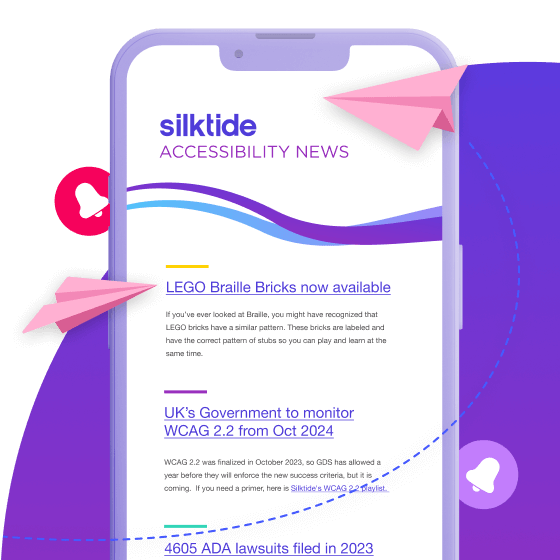Here’s the Silktide guide to migrating your website. There’s a lot to think about, but a methodical approach will ensure you minimize risk, keep your team on the same page, and preserve your SEO rankings.
What is website migration?
Website migration is the head-meltingly difficult task of transferring an entire website from one place to another. There’s a lot to consider, and if you get it wrong your search traffic could drop off a cliff, all your content could disappear and your servers will catch fire.
That being said, with the right tools and a bit of planning, it’s doable. Read on for some website migration tips and strategies.
Part 1: Why migrate your site?
Reasons range from a relatively straightforward upgrade from HTTP to HTTPS to merging multiple multi-thousand-page websites, all on different CMS’, into one. Some of the common reasons are outlined below. Your migration may involve more than one, or all of them.
Switching to HTTPS.
All websites should use HTTPS to keep client data secure. HTTPS protects information passed between a website and its visitors. The use of HTTPS is strongly recommended for SEO, GDPR, and usability.
Modern web browsers will warn users if a website has a form and is not using HTTPS. Chrome highlights these websites as “Not Secure”.
Google considers HTTPS when ranking websites making it an important concern for SEO.
A switch to HTTPS means your URL goes from this:
http://example.comto this:
https://example.comThings to consider
Make sure you’re using server-side 301 redirects from your HTTP pages to the HTTPS versions. This means that any external backlinks to your website from other sites will still load, by sending your visitors to the secure version.
Choose a high-security-level certificate from a trusted certificate authority, and avoid redirect loops which will make your site entirely inaccessible.
Site redesign or rebuild
The consensus on Google is suggesting you should redesign your site every 2-3 years.
You might be rebranding or just fancy a change to an updated style. Along with a redesign, you might be rebuilding on a new underlying architecture to accommodate new functionality.
A rebrand/rebuild is a good opportunity to audit any user journeys or funnel blockages on your website that prevent the capture of useful customer data or stop people purchasing from you.
Google Analytics is a good place to start to gather user data, but one useful suggestion is to give your website to a new user or your most recent hire and ask them to achieve certain tasks. If they struggle to find the information they need or take the actions you want them to, use their feedback as a starting point for a wider study.
Things to consider
Plan your content. Ensure that all the relevant information you need to get across is available. Have you launched any new features recently? Write about them.
Overhaul your navigation. Group content in a logical way. Find websites in similar industries and see how they do it.
Use Google Analytics to identify your most important pages in terms of traffic, conversion, and engagement.
Take a modular approach. We redesigned the Silktide website using reusable blocks, so our content team can mix and match like Lego without any further developer involvement. If any new blocks are needed, they can be designed, coded, and implemented down the line with relatively minimal effort.
Include accessibility at the design stage. Giving consideration to every web user is legally required in some sectors, but even where not it’s also a moral obligation. By including everyone, more people can access the information they need on any device, using any input method.
Add 301 redirects from all existing pages to their corresponding new ones where applicable.
Domain name change
For a straight swap with existing content, a change of domain name is relatively straightforward. A straightforward use case would be a change of top-level domain, from https://example.co.uk to https://example.com, for example.
In this case, the URL https://example.co.uk/features page would map directly to https://example.com/features. This is handled by a 301 redirect.
The main steps, as outlined by Google, are:
- Create a copy of your current site in a new CMS
- Copy over assets
- Source a new TLS(SSL) certificate
- Determine current URLs
- Create a URL map from old to new
- Implement 301 redirects
- Update your robots.txt
- Let Google know in Search Console
Things to consider
In cases where the new site is exactly the same as the old one, you may just be able to create a server-side wildcard redirect, which automatically sends all traffic to the new TLD.
If any content is changed, updated, removed, or added (including media files), then you’ll need a list of all the pages present on your site, along with the locations of media files like images, PDFs, documents, and videos.
Use the Silktide Inventory. It lists everything by file type and allows you to download a .csv or .xls file of everything on your site.
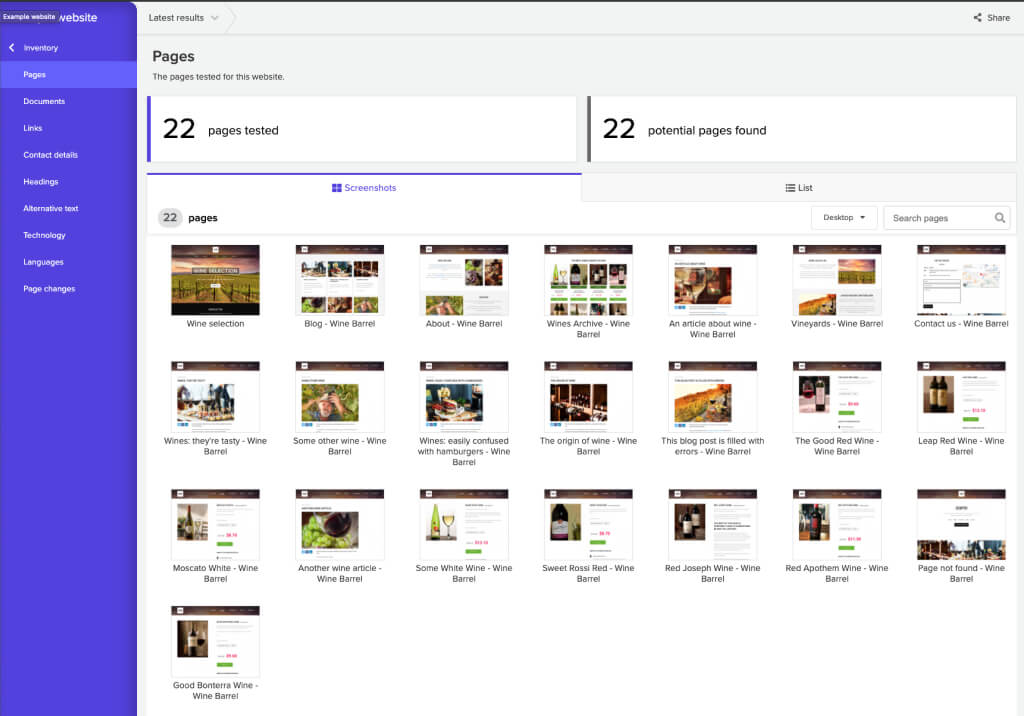
Once you have the list, map content to new URLs as required and give it to your developer to implement the 301s.
Making your website accessible
You don’t need to migrate your site in order to make it accessible, but if you are migrating for a redesign or a change of CMS, this is the time to do it.
Accessibility is not about disability, it’s about inclusivity. Inaccessible websites create barriers and frustrate users who want to engage with your organization, resulting in a poor experience.
Things to consider
Accessibility should begin at the design and technical planning stage wherever possible. It’s a huge topic in itself and outside the scope of this article, but you should take advantage of the tools available to help you test your website to the required standards.
For many public sector websites around the world, accessibility became a legal requirement towards the end of 2020. For further reading, refer to the UK Government guidelines on web accessibility to WCAG 2.1 standards and the W3C WAI guidelines for Section 508 in the USA.
Part 2: Create your strategy
Fail to plan, plan to fail. You could try to wing it, but we’d not recommend it. There are a lot of moving parts, a lot of people potentially involved, and a lot of things that could go wrong. Identifying responsibilities and the overall plan early on is key to a successful website migration.
Once you have established why you are migrating your site, the fun can begin.
Build your team
You should begin by identifying the teams or individuals responsible for each aspect.
As your marketing, design, and development teams may be of varying sizes, it might be useful to assign tasks by role (in case one person is responsible for more than one area). Suggestions include:
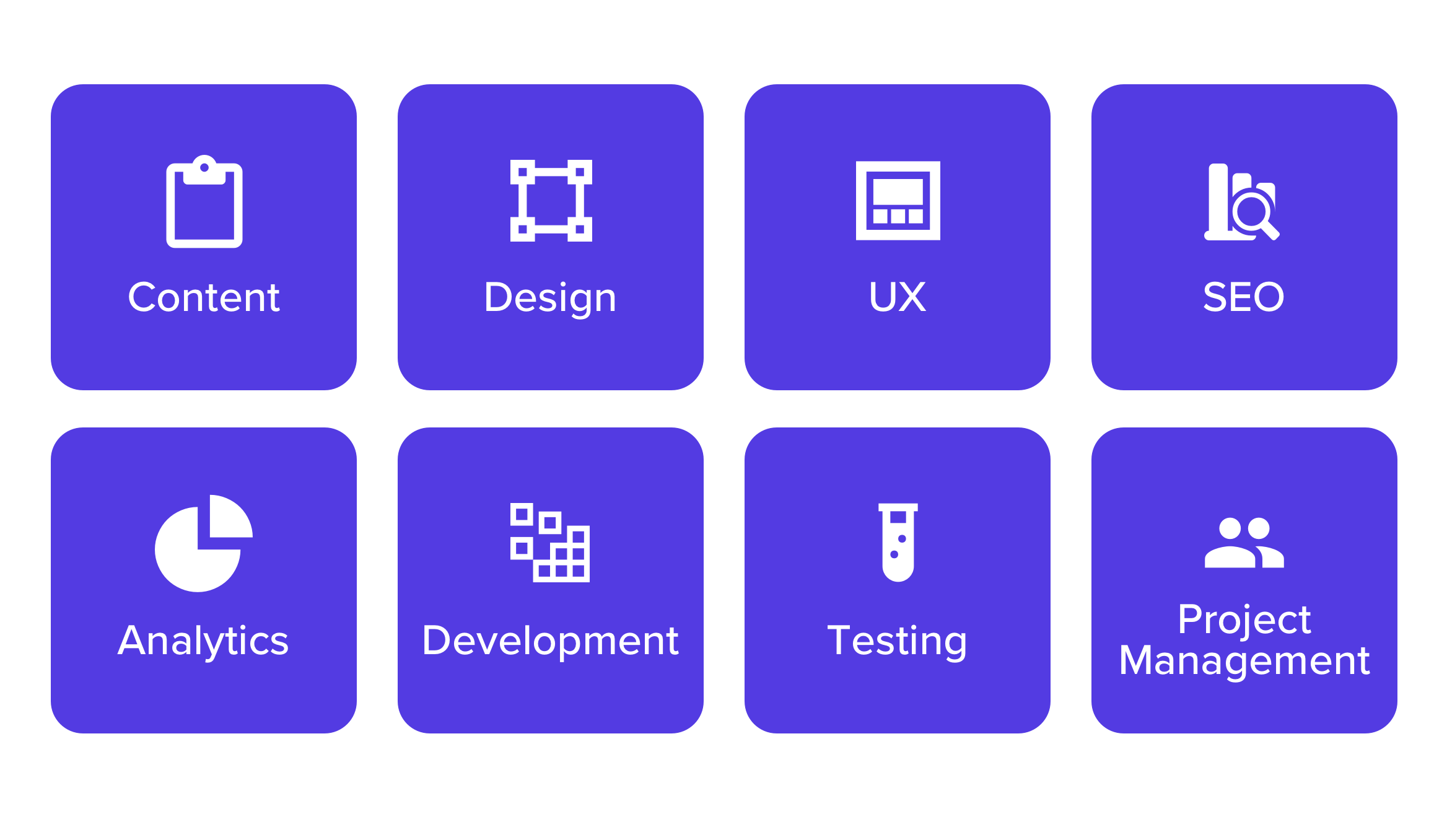
Once everyone knows what they’re doing, the project manager sets out the timescales for completion and informs the team of any milestone deadlines.
Part 3: Pre-migration checklist
Plan your content
The content team audits existing content to address any gaps or changes. They plan which new content should appear on the site and in what form it takes.
For example, if you have released any new products or services but have not yet added them to your site, the content team will be responsible for listing out and creating that content.
They also decide whether new content like videos, whitepapers, or reports are required, and discuss with the design team how best to present it.
An aside: How Silktide planned our content
When we rebuilt the Silktide site, we started with the content before the design. We performed an audit of the current site against the services we offer and noted any obvious gaps.
As the site hadn’t been updated in a while, we quickly found a number of gaps where the website had not kept pace with our ongoing platform development. Entire features were missing and other features were not explained as well as they could have been.
Once the main navigation sections were decided on, and the initial sitemap created, we set about creating the copy for the new site. This was passed to the design team with a brief. Having real content to work with during the design process made them happy.
Whatever your process, think about what content your target audience needs. If you haven’t got the time or resources to create it all yet, don’t worry. As long as you include the option to add it later, and it fits in with your site structure and design, you’ll be ahead of the game.
Design and prototyping
The designers and UX guys make sure the site looks good, is easy to navigate, and is designed with accessibility and SEO in mind.
Web migration is a fantastic opportunity to fix or improve all the things that your marketing team has been nagging you about for the last 2 years. Top complaints from these guys include:
- Not enough content
- Content out of date
- Poor user experience
- Limited traffic
- Terrible SEO
- Horrible signup process
Once you’ve identified the issues your marketing team has flagged and created your new content, pass the details to your design team. An abridged version of the design process might look something like this:
- Briefing
- Wireframing based on the proposed site map
- Initial concepts
- Set colors, fonts and global styling
- Design the site components
Your content, SEO, and development teams should all give input and feedback because your site should not just be attractive and easy to read, but technically functional.
Outline SEO requirements
SEO is a big topic so I won’t be covering everything here. Here are some pointers to get you started.
URL structure
Plan out your site structure early on. Choose the most important top-level sections first, then break them down into logical chunks.
For example, most SaaS websites will contain details of their product, who it’s for, their content hub, and their pricing in the top navigation bar. People looking to buy software need to know a) what it does, b) how it can help and c) how much it costs.
ECommerce businesses will take a different approach. They’ll break down their navigation by product type, then break those further into subcategories, and again with filters.
Whichever type of organization you’re in, now would be a good opportunity to research others in your space to find any common themes in terms of structure. You’ll generally find that most websites in a given sector are structured in similar ways.
Site inventory
It’s essential you create an inventory of your site. List all URLs in your current site along with all assets (images, videos, documents) and their locations.
You’ll use this to create a 301 redirection map. The goal is to set your redirects directly to the new pages. You should avoid multiple redirects (redirecting to pages that immediately redirect to another page).
Identify top-performing pages
Use analytics data to see which pages on your current site are the most important to you, and factor that into any new content or structure you create.
How you decide what’s important is up to you, but you may wish to consider traffic volume, search terms, conversion and bounce rates. As far as possible, it’s better to preserve URLs for important pages. Where this isn’t possible, it’s critical you set your redirections correctly.
Content and headings
Every page needs headings to be defined, including one (and only one) H1 tag. Ensure that the design and coding of the site account for semantic markup and SEO-friendly on-page content.
Keep your design consistent across your site. Use templates for your main site, your blog, your resources, and pricing.
Page speed
Account for server speed, HTML and CSS file sizes, resource caching, and compression.
Image optimization
Ensure your designers and content editors compress images into the most suitable format, and that file sizes are as small as possible without compromising on image quality.
Your content team will also need to ensure that every image uploaded has an appropriately descriptive ALT text, not just for SEO (Google image search uses it) but for accessibility (screen reader compatibility).
Meta descriptions
Define meta descriptions on every important page on your site. If you don’t, Google will choose its own when your page is displayed in the SERP.
Sitemaps
Prepare sitemaps for submission to Google Search Console once the migration is complete.
Set up analytics
Make sure your new site contains your Google Analytics tracking code, or better yet, use Google Tag Manager if you’re not already.
It’s important to set up conversion tracking again, as this will likely have changed. If you currently redirect users to a “thank you” page after filling a form in, then update the Goal URL in the Admin section of Google Analytics.
If you’re an eCommerce company and have changed your CRM, it’s also important to ensure your eCommerce conversion tracking settings still work.
You can test your staging site analytics by using Google Tag Manager in preview mode.
Development
It’s time for your developers to get their hands dirty. There are four main stages they’ll need to take care of:
- Backup current site
- Set up a staging environment
- Build the site to the new design
- Automated testing
Between building and testing, your content team will populate the staging CMS with new content.
Testing your new website
Testing is critical and exposes any errors that detrimentally affect the following:
- SEO and marketing
- Content
- Accessibility
Testing is the most important thing you must do after building your staging site and before launching it. It’s also potentially the most time-consuming.
Rather than searching through pages manually looking for errors, and leaving it to chance, you should take advantage of automated testing software (like Silktide). You’ll then be notified of areas of improvement on which to focus.
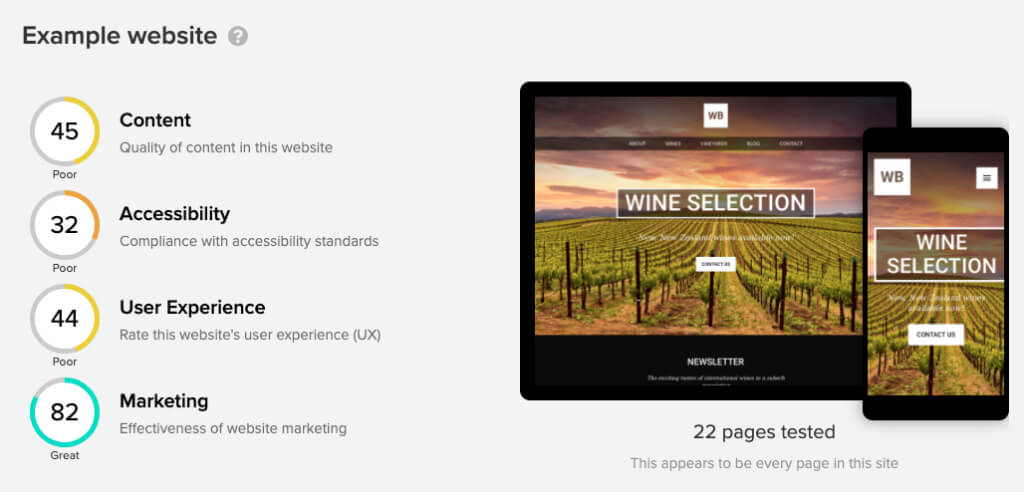
Let’s look at each of the testing criteria that you should concentrate on:
SEO and marketing audit
A technical SEO and marketing audit helps you spot errors affecting page speed, mobile device usability, broken redirects, user experience, and image search listings. Ultimately, they are detrimental to SEO and will result in lower rankings in Google.
Identifying these before launch reduces the risk of your website dropping out of the search rankings when you migrate it. Specifically, your 301 redirect strategy should be robust enough to mitigate this.
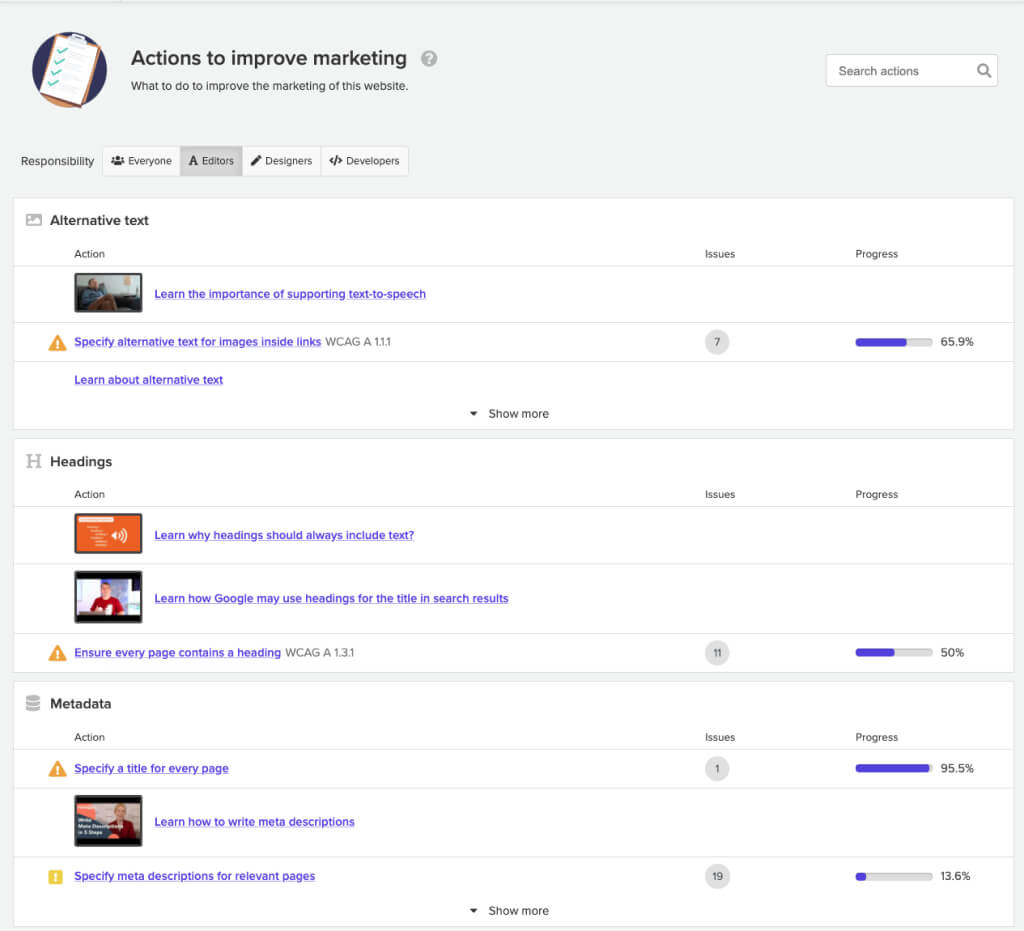
Website content optimization
Content optimization covers spelling, grammar, broken links, readability, and technical faults. All these potential issues result in poor user experience, can contribute to poor SEO performance. Running your site through Silktide is a good way to find the problems, so you can fix them long before your new site goes live.
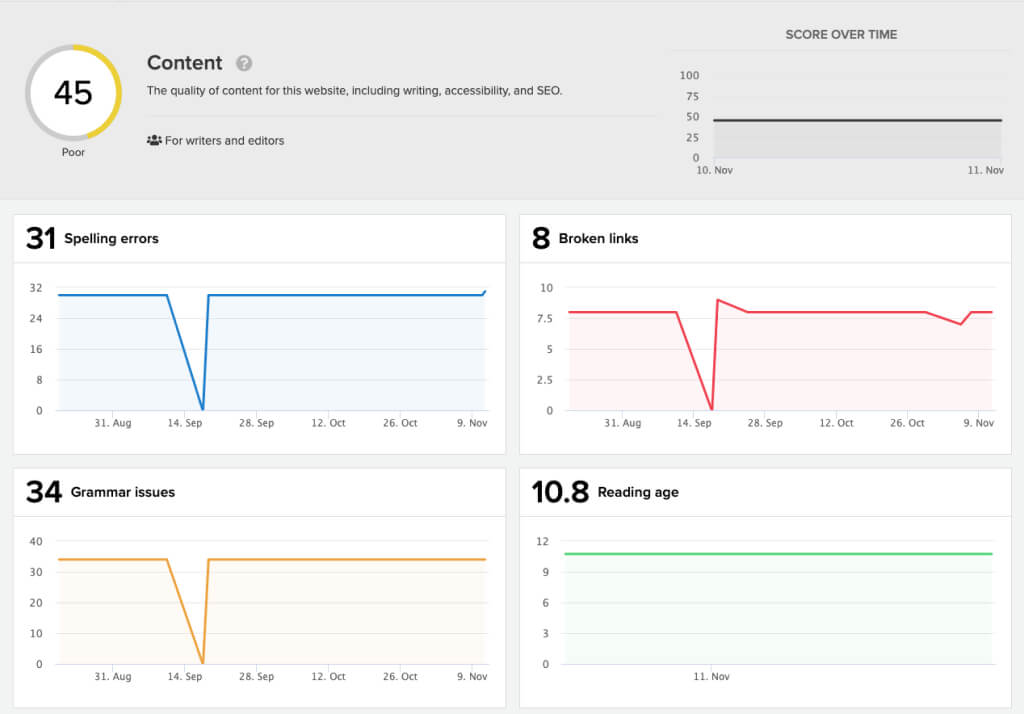
You may have hundreds or thousands of new pages of content, probably written by multiple teams and team members, so it’s likely that some spelling and grammar errors creep in.
Even if you’ve migrated existing content, now is a good opportunity to check for spelling errors.
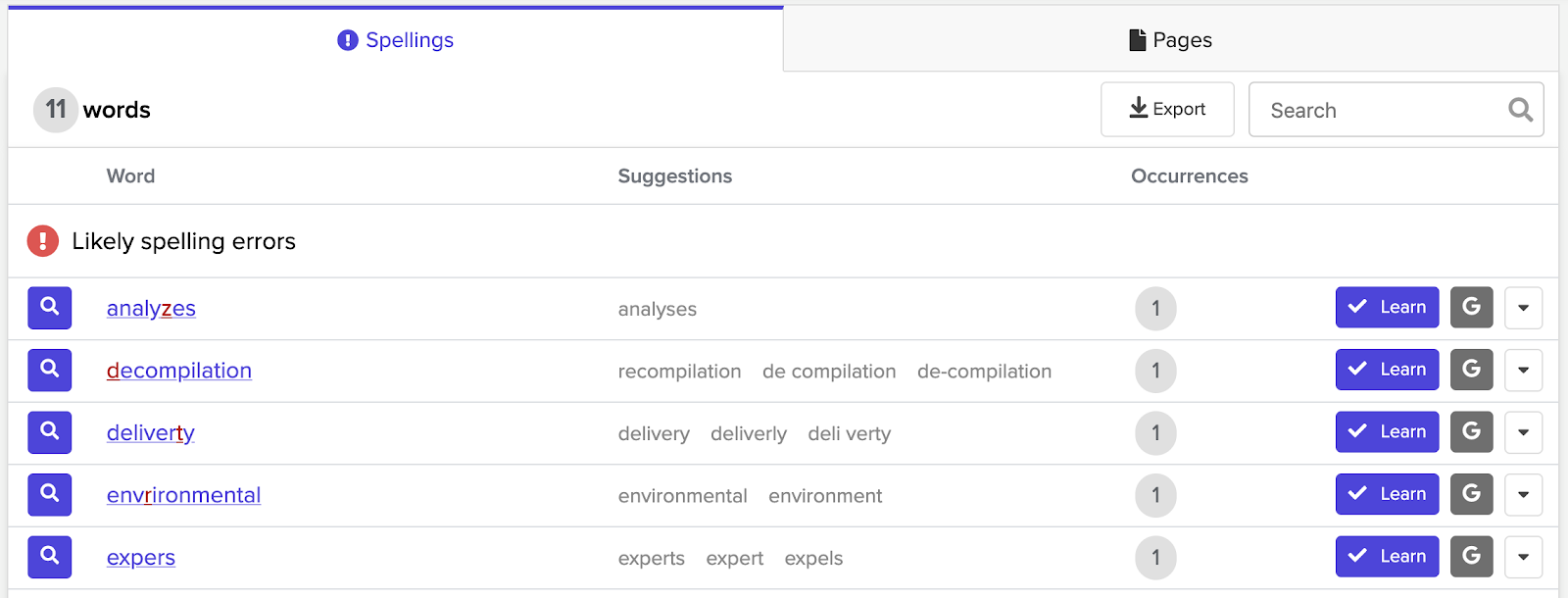
Accessibility audit
Public sector websites in Europe and the USA need to comply with WCAG 2.1 and Section 508 standards for accessibility. Accessibility is a whole topic in itself and outside the scope of this article, but suffice to say that it’s a huge and potentially complicated subject.
You’ll need to use a combination of both manual accessibility audits and automated accessibility testing to ensure your website complies with the latest standards and laws in your region.
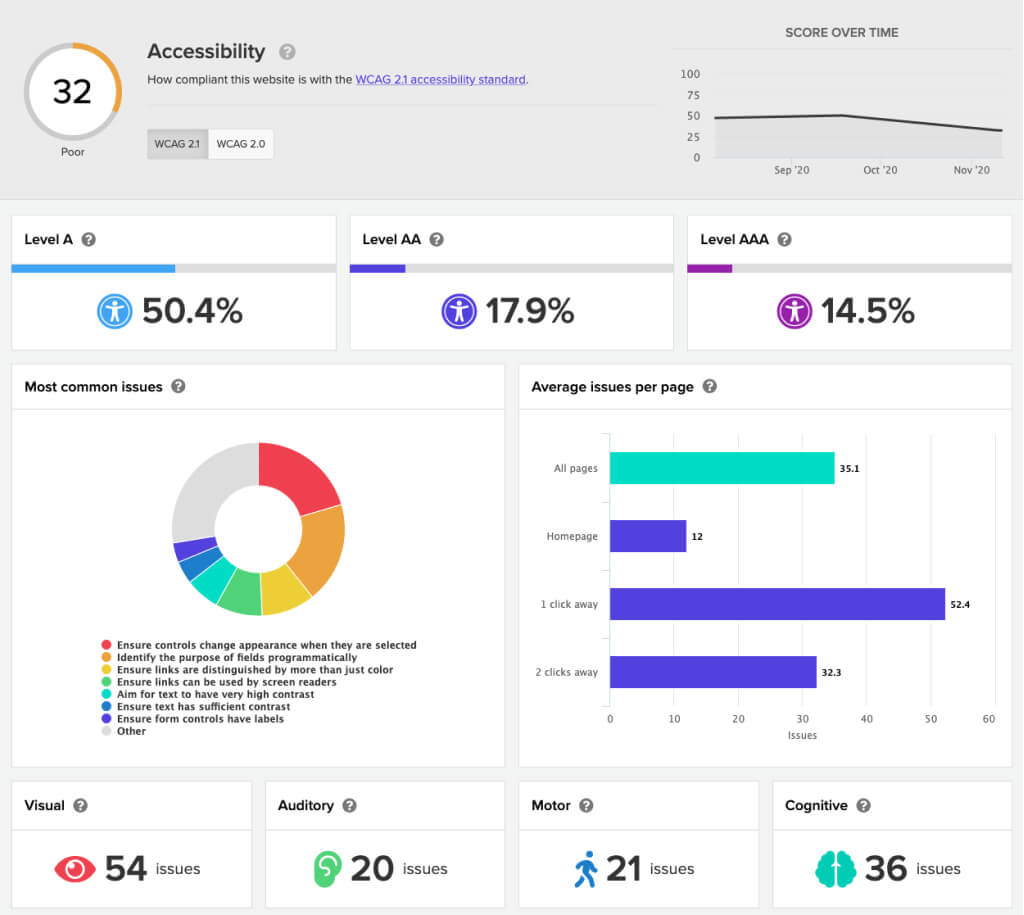
Silktide can help you – we’re the automated platform that tests your site against WCAG 2.1, which includes mobile accessibility standards.
Check your website for free right now with the free Silktide accessibility checker.
Part 4: Launch
Once your site has been tested by the team, it’s time to set it live. You’ll generally achieve this by:
- Removing any IP blocking or authentication measure
- Updating robots.txt to allow crawling
- Changing your DNS entries.
- Updating Google Search Console
SEO monitoring
Once your site is live, keep a close eye on your SEO KPIs, the ones you outlined when you decided on which pages were the most important.
It will take Google 1-2 weeks to crawl your site, so expect to wait for at least this long before seeing new pages in a “site:” search on Google.
You should also pay close attention to incoming traffic sources, checking before/after analytics data. If your important pages suddenly stop getting traffic, check your redirects (although, you should have already done this before launch and minimized any issues here).
Social and paid search updates
Now your site is live, you’ll very quickly need to update your social media and paid traffic source links. Once you’ve updated your paid campaigns, don’t forget to also update your social media profile pages, including any call-to-action links. Examples of networks you should check include:
- YouTube
- G2
- Vimeo
Part 5: Summary and ongoing monitoring
This article has covered the reasons why you might consider migrating your site, the process of building your team, planning your content and design, building the new site, and ongoing monitoring of the new site.
To preserve your SEO rankings and create a well-structured, logical, and easy-to-use website, it’s important to plan ahead. Nobody can be expected to be an expert in content writing, SEO, and accessibility, so using a platform like Silktide means anyone can create content and check their work easily, on an ongoing basis.
Any new content you create should be checked for spelling or grammar errors, broken links, and accessibility. As long as you’re methodical and plan your website migration, the process should be relatively straightforward.
If you need help with testing your website during the process (and we’d recommend it, both before and after launch) then you can request a demo of the Silktide platform.
Part 6: Bonus Content – How our customers do it.
Watch a 2-minute case study to find out how Silktide can help you with migrating your website.

